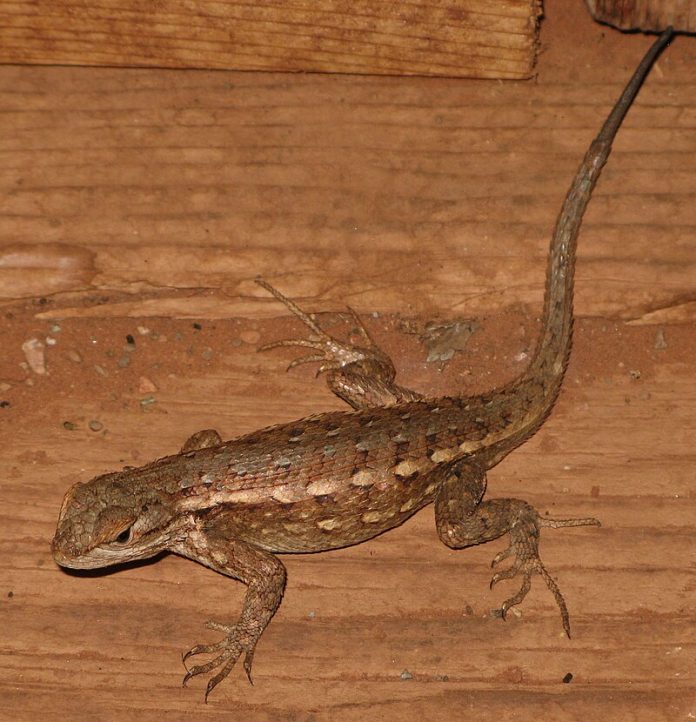The U.S. Fish and Wildlife Service (FWS) has proposed listing the dunes sagebrush lizard, which resides in a limited range in the oil-producing part of West Texas and southeast New Mexico, as an endangered species, citing habitat loss, fragmentation, and climate change as the main threats to its survival.
The lizard’s habitat is right in the middle of the very active Permian Basin oilfield. If the lizard is listed as “endangered” under the 1973 Endangered Species Act (ESA), special permitting would be required for any activity that could potentially disturb the lizard itself, or the habitat, and would involve multiple agencies, including the Bureau of Land Management (BLM) and the FWS, whether the activity was on private, federal, or state lands.
Voluntary Agreements Being Scrapped
The listing is a continuation of the Biden administration’s attempts to stifle domestic oil and gas production, says Daren Bakst, senior fellow and deputy director of the Competitive Enterprise Institute’s Center for Energy and Environment.
“This is yet another Biden administration attack on the production of oil and gas, hiding behind the facade of protecting a lizard.” Bakst said.
Voluntary joint efforts by oil companies and state agencies in New Mexico and Texas with the FWS under Candidate Conservation Agreements have been used to protect the species already. The FWS acknowledges that such agreements presently cover 85 percent of the lizard’s range in New Mexico.
These prior arrangements were helping the species to recover, Bakst says, and could have continued instead of imposing ESA regulatory strictures.
“For many years, there have been strong conservation efforts already in place to protect the dunes sagebrush lizard,” Bakst said. “Instead of proposing to list the lizard as an endangered species, the Fish and Wildlife Service should be embracing strong private and state efforts to protect the lizard.”
‘Unreasonable and Unworkable’
Those kinds of state and private efforts are historically the way environmental regulation has been handled in Texas, at least, says Karr Ingham, executive vice president of the Texas Alliance of Oil and Gas Producers.
“Historically these kinds of issues are handled by the state regulator,” Ingham said. “Texas has very little in the way of federal lands and waters, so if you want to drill a well in the state of Texas, permitting only needs to come from the state.”
However, if the Biden administration wanted to see a decline in domestic oil production, Ingham says, using federal law like the Endangered Species Act would be the way to reach into a state like Texas, and it is logical that they would target the Permian.
“If you can put a new regulatory structure in place that results in unreasonable and unworkable delays, you can really do some damage to oil production there,” Ingham said. “If you have an administration that is openly hostile towards a domestic industry, in this case the U.S. oil and gas producing industry, you are going to direct that hostility at the one region of the country that accounts for the lion’s share of U.S. production.”
Importance of the Permian
Production from the Permian Basin alone makes up about half of total U.S. crude oil production, according to data from the U.S. Energy Information Administration (EIA), and is the second largest natural gas producing basin behind the Appalachian Basin.
Two counties in New Mexico alone, for example, are responsible for 29 percent of Permian Basin crude oil production. Both counties, especially Lea County, hold large amounts of dunes sagebrush lizard habitat that would be under protection if the listing took effect.
Rule ‘Challenged and Heavily Litigated’
The Permian is vital for energy production, so an endangered species listing that hinders development there would have a substantial impact, which could lead to litigation, says Ted Hadzi-Antich, senior attorney with the Texas Public Policy Foundation.
“The Permian Basin is prime ground for energy development, and this listing could have a major impact,” Hadzi-Antich said. “I expect the ruling will be challenged and heavily litigated.”
Litigation to get species downlisted—meaning moved to “threatened” instead of endangered or delisted entirely—is possible. Nineteen species have been previously delisted after being listed in “error” between 1973 and 2016.
How the ruling could be overturned in this case would depend on the arguments put forth during the comment period, as well as any potential procedural mistakes or a lack of substantial proof that the species requires the extra protection of the federal government, says Hadzi-Antich.
“There is no good way to predict what the end will be, and it’s even more difficult because all we have is a proposed rule, which is followed by a comment period, and it’s the final rule that can be litigated,” said Hadzi-Antich. “Sometimes it’s procedural, or maybe the government doesn’t show clearly enough why the species is being listed.”
The Fish and Wildlife Service is taking public comments on the proposed listing until September 1, and could issue its final rule at any time after that.
Linnea Lueken (llueken@heartland.org) is a research fellow with the Arthur B. Robinson Center on Climate and Environmental Policy at The Heartland Institute.


























